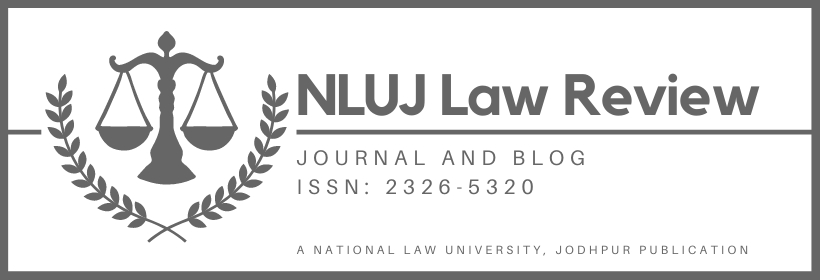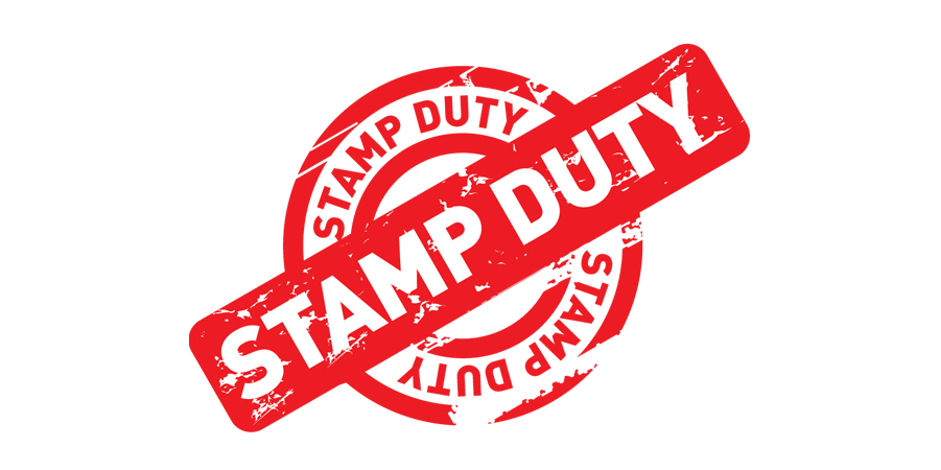The Insolvency and Bankruptcy Code, 2016 (“IBC” ) described as the boldest reform in the Indian economic sphere has fundamentally changed the insolvency and bankruptcy regime in India. IBC has been responsible for uplifting the status of India in terms of ease of doing business, allowing the banks to recover financial debts and ensuring the sustenance of the economy. However, like any other legislation, the resolution process under IBC faces various implementation challenges. A major challenge has been the considerable delay in the resolution process through multiple rounds of litigation in various forums at different stages. The recent ruling of NCLAT in the case of Vishal Vijay Kalantri v. Shailen Shah (Resolution Professional of Dighi Port Limited) highlights the same problem of unnecessary litigation by erstwhile promoters of the corporate debtor in order to delay or rather frustrate the resolution process. The author analyses the ruling and argues vehemently against the tendency of promoters to act as impediments to disrupt the resolution process and, thereby the speedy resolution shackling the sanctity of IBC.
Background
The Corporate Insolvency Resolution Process of Dighi Port Limited (“corporate debtor”) was initiated on March 25, 2018. The resolution plan submitted by the Adani Ports Special Economic Zone Limited (“APSEZ”) and the successful resolution applicant was approved by the Adjudicating Authority, National Company Law Tribunal (“NCLT”) Mumbai Bench via order passed on March 5, 2020. The said order was challenged by the former promoter of the company, on the ground that the required approval of Competition Commission of India (“CCI”) in terms of Section 31 of the Code was not taken. It was contended before the National Company Law Appellate Tribunal (“NCLAT”) that in absence of the statutory approval by CCI, the resolution plan could not have been passed by the Committee of Creditors (“CoC”).
NCLAT Verdict
At the outset of the discussion, the Tribunal described the challenge as a glaring example of ‘promoters not letting the goose escape from their dragnet, though it no more lays golden eggs’. The Tribunal observed that the promoters have put forward every effort under the sun to frustrate the resolution process and further to banish the revival of the corporate debtor. It expressed that these efforts were ‘jeopardising the legitimate interests of all stakeholders and defeating the object of legislation’. The reason for this observation stemmed from the fact that the instant appeal under NCLAT was the third attempt by the promoters to stall the resolution process. It is pertinent to mention that during the resolution process, the promoters of the corporate debtor were given sufficient opportunity to settle the claims under Section 12 of the Code, however the promoter failed to deposit the earnest money even after seeking multiple extensions on the timeline. After analyzing the material on record and facts of the case, it was held that there was nothing to depict that the approved resolution plan of APSEZ contravenes any provisions of law.
The promoters’ argument that the settlement offered by them was better in terms of maximization of the asset value of the corporate debtor and subservient to the interest of all stakeholders. . The said argument was rejected by relying on the settled proposition that the business decision resting upon commercial wisdom of the CoC is not justiciable in law. Further, the Tribunal referred to the ruling of the Supreme Court of India in Committee of Creditors of Essar Steel India Limited v. Satish Kumar Gupta (“Essar Steel”) wherein it was observed that the Adjudicating Authority cannot intervene on merits with the commercial decision taken by the CoC and the scope of judicial review qua the approval of the Resolution Plan is limited.
The required prior approval by CCI is not mandatory and only directory in nature
While discussing the challenge of pre-requisite approval by CCI, the Tribunal laid emphasis on the fact that a resolution plan providing for a combination falling within the ambit of Section 5 of the Competition Act, 2002 indeed requires a prior approval of CCI. However, the proviso to Section 31(4) makes it abundantly clear that the resolution applicant is required to obtain necessary approval within one year from the date of approval of the resolution plan by the Adjudicating Authority. Further by relying on the ruling in the case of Arcelor Mittal India Pvt. Ltd. v. Abhijit Guhathakurta, the Tribunal categorically laid down that the proviso to subsection (4) of Section 31 of the Code which makes the approval from CCI a condition precedent to the approval of resolution plan by CoC, is directory and not mandatory. Thus, the resolution plan submitted by APSEZ and approved by the Adjudicating Authority was not in contravention to any law and hence the appeal was dismissed by the Tribunal.
Hounding of resolution process by promoters in India
The problem of prolific harassment of the insolvency law by the erstwhile promoters is not novel. The N.L. Mitra Committee on the Advisory Group on Bankruptcy Laws in its report observed that “In most of the cases, the debtor (the promoter of the company or the management) does not have any genuine intention for attempting restructure.” In the same report it was observed that there is a dire need to shift from the approach of debtor in possession to creditor in control. The Committee while referring to erstwhile insolvency law regime expressed that “the most critical provision under SICA is that the promoter/management bringing the entity to the BIFR remains in possession and creates incentives for stripping off assets.” Thus, it can be safely concluded that the problem of promoters not letting go of their bankrupt businesses is not completely resolved even under the IBC regime.
It is pertinent to note that the whole purpose of taking away the control of the company from the erstwhile management of the company is to ensure swift and smooth resolution of the company. Speedy resolution is the essence of IBC as it ensures minimum loss of asset value and efficient revival of corporate debtor in the economy. Yet the frivolous litigation and other unlawful tactics by the promoters have created chaos and complexity in the resolution process.
There are several instances to substantiate this argument. The most significant being the existence of Section 29A of IBC which prohibits the promoters of the corporate debtor to take a backdoor entry in the resolution process. The raison d’etre of this provision emanated from the fact that the promoters who were abusing the IBC by acquiring the corporate debtor back by paying a substantially smaller amount than they actually owed and taking an unfair haircut. This created a moral hazard of promoters bidding for their own assets at steep discounts, thereby benefiting at the cost of the lenders. These efforts of the defaulting promoters to regain control of the companies concerned at a discount created muddy water in the IBC resolution process. Evaluating the travesty involved, the government was forced to amend the IBC to prohibit promoters from bidding under the resolution process.
However, even after the said amendment the promoters in Essar Steel did not give up and tried to entice the creditors by a last minute offer consisting of lucrative sum of money. This move was a clear response to circumvent the decision of the Supreme Court in Arcelormittal India Private Limited v. Satish Kumar Gupta. The irony became quite evident when the willful defaulters of Essar Steel were willing to pay relatively higher amount to clear their debts and expunge the insolvency proceedings. However, this proposal was out-rightly rejected by the Adjudicating Authority and eventually the Essar steel saga become a lesson for willful defaulters that the practice of seeking fat waivers from PSU banks is now a practice of the past. The author submits that the legislative process under IBC is sacrosanct and any attempt to sidestep such process must be prohibited. The adherence is to given to the legal facets of IBC and not to such lucrative offers by willful defaulters thereby preserving the economy and enshrining the rule of law.
Another step which the government was compelled to undertake was to change the Insolvency and Bankruptcy Board of India (Liquidation Process) Regulations, 2016 which plugged the loopholes by barring the ex-promoters and other ineligible persons to buy the stressed asset or even participate in any compromise or arrangement at the stage of liquidation. Thus, the legislative intent was made quite clear by amending the regulations to disallow persons who are disqualified under Section 29A of IBC from re-acquiring the company through the mechanism of a scheme or in enforcement of security interests by secured creditors.
Conclusion
The resolution process was completed in more than two years which is more than twice the stipulated statutory timeline under the IBC. Thus, certain delay can be attributed to the anarchistic approach of promoters who attempted thrice to frustrate the resolution process. Despite being smothered by distressed assets; promoters are not throwing in the towel just yet. On evaluating the discussed amendments along with the recent ruling of NCLAT in the resolution process of Dighi Port Ltd., it is evident that promoters are engaging in every fair or foul means to frustrate the resolution process as they seem determined to hold on to their crumbling empires. The reason for embedding a swift resolution process under IBC was to prevent the economic degradation terms of asset quality. If promoters are unwilling to let this happen and do not share enough information, the core of the IBC breaks down. The idea behind this Code was to put an end to such legal exercises by promoters which are against the commercial morality of IBC. Thus, it is imperative for the sanctity of IBC to discourage such tactics of promoters which severally affect the commercial morality of insolvency and bankruptcy law regime in India. The ruling of NCLAT in Vishal Vijay Kalantri v. Shailen Shah (Resolution Professional of Dighi Port Limited is a progressive step which will be instrumental in dealing with frivolous litigations by the promoters and thus ensuring a speedy, sustainable and efficient insolvency regime in India. Although the IBC has been successful in the Indian economy, we have miles to go before we achieve a system of swift and smooth insolvency resolution in India.
This article has been authored by Pranjal Pandey, student at Maharashtra National Law University, Nagpur



